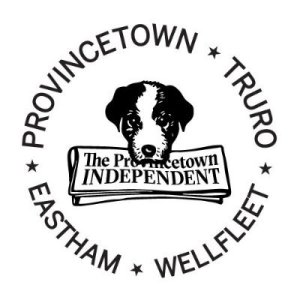
I got some really thoughtful responses here and on Facebook to my post arguing that Massachusetts law should be changed so that government entities can take out legal advertising in digital-only news organizations and not just in print newspapers.
There’s no question that such a change would create unintended consequences, but change is necessary at a time when fewer and fewer local news outlets have a print component. Anyway, let me take on three issues raised by readers.
• Print newspapers are the only proper outlet for legals. Honestly, there just isn’t a good case for this, and for a very simple reason: print newspapers are disappearing. I suppose you could make an argument that legals ought to be restricted to print in communities where that is still an option, but that’s becoming increasingly unrealistic.
Ethan Forman, a reporter for the Gloucester Daily Times, worries that if digital is an option, local officials will choose one of the websites owned by the Gannett chain, which has been shutting down many of its weekly newspapers. “If we lose legal ads to digital, which I guess is inevitable,” Ethan says, “then these zombie Gannett websites will benefit and it will strip newspapers of this ad revenue…. If digital legal ads are allowed, I’m sure it will go to this zombie website instead of us because rates will be cheaper.”
Ethan makes a good point, and perhaps the legislative fix that state Reps. Ken Gordon and Alice Hanlon Peisch are working on could include a provision requiring that legals can only be placed in a news outlet — print or digital — that has a certain level of presence in the community. You don’t want to base it on paid circulation, because many digital outlets are free. So perhaps web traffic or newsletter subscriptions could be used as a proxy. You might also come up with some sort of objective requirement for publishing a certain amount of local news in order to be eligible for legals.
• Nonprofit news outlets should not be a forum for legals. This argument comes from Ed Miller, the co-founder and editor of The Provincetown Independent, a for-profit print and digital news organization. Ed writes:
You point out, correctly, that one powerful argument for the publication requirement is that legal notices be published in a forum independent of the government, as an anti-corruption measure. But virtually all of the new online-only publications are organized as nonprofits, which are not independent of the government. They are dependent on being approved as legitimate by the IRS and the state.
I think Ed exaggerates a bit — there are many for-profit digital news organizations, and some of them are quite successful. But he’s right that most of them are nonprofits. Where I really disagree is with his notion that nonprofits are not sufficiently independent to carry legal ads.
Nonprofit news organizations large and small are doing excellent work in holding government to account. I don’t think the idea that they are insufficiently independent to run legal ads holds up. I honestly can’t see what problems might arise — that they might be intimidated into changing the wording of an ad after it’s been published online lest they lose their nonprofit status?
Government threats to pull legal ads pertain to for-profits and nonprofits alike. Last year, for instance, Colorado media-watcher Corey Hutchins reported that a newspaper owner in the Denver area abjectly apologized for a racist April Fools Day joke in the hopes of retaining $10,000 in legal ads. It failed, as the city council voted to take its business elsewhere.
Ed himself told a Northeastern University audience last year that the Independent has been unable to attract legal ads, which he attributed to his newspaper’s tough coverage of local officials. Good for him for not giving in — but it shows that officials do, in fact, have leverage over community news outlets regardless of whether they are for-profit or nonprofit. (Disclosure: I’m on the Independent’s informal advisory board.)
Ed also argues that digital-only legal ads exclude readers who aren’t online. True enough. But again, you can’t will a print newspaper into existence in a community that doesn’t have one.
• Digital is a flawed format for creating a permanent archive. This is a real concern, not just for legal ads but for the very digital news organizations that would carry them. “This has to be addressed in the law to force news websites to take archiving seriously, but the law has to be flexible to enough to adapt to changing technology,” says Aaron Read, an engineer with The Public’s Radio in Providence, Rhode Island. “That’s not a trivial task.”
I guess the question here is for how long legal ads must be “preserved and secure in a tangible record that is archived,” as the law requires. A hundred years? Five hundred? Or long enough that it’s fulfilled its purpose, which in most cases would be for a much shorter period of time.
Legals could be printed out and stored at public libraries. Or PDFs could be created and uploaded to a separate repository. That’s probably not a forever solution, but I suspect that we’ll still be able to read PDFs 50 years from now. As I noted on Saturday, the Massachusetts Newspaper Publishers Association keeps an online repository of legal ads, and if the MNPA ceased to exist (perish the thought!), presumably someone else could take it over.
Preserving websites is a real challenge, though. Print newspapers, at least, can be microfilmed and viewed in their original format indefinitely. Too much of the web, by contrast, just seems to go away.
As Ethan notes, it’s inevitable that legal ads are going to move to digital-only news sites — that is, if we can keep them on news sites and not just have them move to government platforms. Now’s the time to think these issues through in order to serve the public as effectively as possible.








